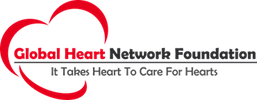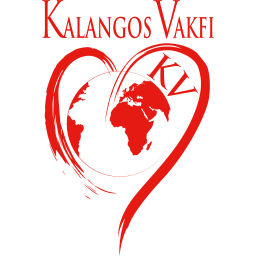The Public Relations Office
of HRH Crown Prince Alexander
SECOND SERBIAN DIASPORA MEDICAL CONFERENCE 2011
“MEDICINE WORLDWIDE AND IN SERBIA”
Belgrade, 23 September 2011 – The “SECOND SERBIAN DIASPORA MEDICAL CONFERENCE 2011” organized by HRH Crown Princess Foundation and Lifeline Humanitarian Organization, in cooperation with the Ministry of Health of Republic of Serbia, Ministry of Religion and Diaspora of Republic of Serbia, Medical Faculty of Belgrade, Serbian Medical Association and World Health Organization (WHO) is officially open today in Hyatt Regency Hotel in Belgrade. The aim of the conference is to improve cooperation between doctors in Serbia and doctors of Serbian origin working abroad, with institutions and individuals who are essentially important for the quality of medical care in Serbia, as well as networking among Serbian intellectual values in the field of health with the Serbian academic society abroad, as well as with prominent foreign experts in the field of medicine.
During the opening ceremony speeches were delivered by:
His Holiness Patriarch Irinej of Serbia
Prof. Dr. Zoran Stankovic, Minister of Health, Republic of Serbia
Mr. Srdjan Sreckovic, Minister for Religion and Diaspora, Republic of Serbia
Prof. Dr. Vladimir Bumbasirevic, Dean of Medical Faculty, University of Belgrade
Prof. Dr. Pavle MIlenkovic, President of the Academy of medical sciences of Serbian medical society
HRH Crown Prince Alexander and HRH Crown Princess Katherine
Following the opening ceremony a panel discussion took place on the topic “Health Management – From Weaknesses to Opportunities” moderated by Dr. Elizabet Paunovic, State Secretary of the Ministry of Health of Republic of Serbia and Dr. Tomislav Stantic, Vice-Prime minister of the Autonomous Province of Vojvodina. Participants on this discussion were: Prof. Dr. Marija Jevtic, Ministry of Health, Republic of Serbia, Doc. Dr. Djordje Bajec, General Manager of the Clinical Centre of Serbia, Prof. Dr. Vesna Bjegovic-Mikanovic, Medical faculty University of Belgrade, Prof. Dr. Gordana Teofilovski-Parapid, Medical faculty University of Belgrade and Dr. Dragan Arsic, Director of the Health Centre “Studenica” in Kraljevo.
Then the press conference took place, with TRH Crown Prince Alexander and Crown Princess Katherine, H.E. Prof. Dr. Zoran Stankovic, Minister of Health and H.E. Mr. Srdjan Sreckovic, Minister for Religion and Diaspora, Prof. Kalangos, Dr Konstantinidis, Prof. Bjegovic-Mikanovic, Prof. Teofilovski-Parapid, Prof. Secen and Dr Dorit Nitzan participating.
Prof. Kalangos emphasized that he is always very happy to come to Serbia and that he is willing to help Dr Konstantinidis to start robotic surgery program in Serbia. Also, Serbian health insurance Fund already signed a contract with Prof. Kalangos that our citizens could go for surgery to Geneva.
After the panel workshops started in the following categories
Intervention cardiology and cardio-surgery - Doc Dr. Branko Beleslin, Cardiology Clinic, Clinical Centre of Serbia and Prof Dr. Afksendiyos Kalangos, Chairman of the Department of Cardio-Vascular Surgery, University Hospital Geneva.
Cardiology and cardio surgery - Treatment of structural heart diseases (congenital and acquired), or non-coronary interventions, is the field of interventional cardiology that has changed dramatically over the last 5 years, and it is expected that this field will have the rapid development during the next decade. This applies especially to percutaneous treatment of valvular heart disease (primarily degenerative aortic stenosis and functional mitral regurgitation) where cardiac surgery is considered as the gold standard. Encouraging results are available from first randomized clinical trials that have demonstrated safety and efficacy of these procedures. This field of interventional cardiology also involves well-established procedures such as percutaneous closure of congenital heart defects (primarily ostium secundum atrial septal defect). In this way, many of these patients have new treatment options either using well-established surgical or emerging minimally invasive percutaneous techniques. The integral part of decision making process for these patients includes ‘heart team’ that consists of clinical cardiologists, interventional cardiologists and cardiac surgeon. The aim of this cardiology/cardiosurgery Workshop is to discuss existing treatment options for selected patients with structural heart disease, through interactive discussion. The broader aspect of this Workshop is to affirm, encourage and initiate program for the treatment of patients with structural heart disease on the national level, that would be recognized through official health care institutions.
Critical Care - Dr Sava Nenic, Orlando Health, Assistant Professor, Florida University.
Critical-care medicine - Critical-care medicine is medical sub specialty that deals with diagnostics and treatment of critical conditions that are life threatening, with usage of sophisticated technology and invasive monitoring for supporting the organs that failed within multi organ dysfunctions. Contrary to other sub specialty areas that focus on singe organic system, such as cardiology and heart, critical care implements comprehensive research of the whole organism. Therefore specialists in this field cover central nervous system, cardio vascular, respiratory, gastrointestinal, endocrine, hematology, nephrology, skin and infection evaluation (sepsis). Severe sepsis is the most common cause of multi organ dysfunction (MODS). Mortality of this condition is as same as of acute myocardial infarction. Therefore lecture of Dr Nenic from Florida, USA, titled “How to treat severe sepsis with multi organ dysfunction in 2011”, with use of factual medicine, will display importance of critical care as unique sub specialty.
Anesthesiology - Dr Milena Komarcevic, Institute for pulmonary diseases Sremska Kamenica, Chief of IC and Reanimation.
Anesthesiology - Today, very complex operational procedures are taking place, thanks to breakthroughs in medical science, implementation of highly sophisticated technology and advances in surgical techniques. Number of patients is getting bigger, and age limits are extended. That is the reason that anesthesiologist sees patients with numerous additional conditions, which requires continuous education and training. By following current trends in anesthesiology, anesthesiologists improve their skills, which contribute to better results of treatment.
The most common way of education is through electronic media, and far less common is from contacts with colleagues abroad.
Although there is state of the art equipment in some segments, there is a need to complement and standardize equipment. There is need to provide more anesthesiology devices, ventilators, infusion pumps and syringe pumps to units for intensive care. It is extremely important that each operating room has sets for assisted intubation. Pain therapy is important segment of our work. The most frequently implemented procedures – systemic or regional, are continuous infusions, and therefore PCA pumps and syringe pumps are necessary, but most of our anesthesiology departments do not have enough of it or do not have them at all. We believe that connecting with anesthesiologists who work at foreign clinics and standardization of equipment would improve quality of anesthesiology in Serbia.
Breast Imaging - Dr. Aleksandra Jaric, radiologist, Institute of Oncology and Radiology, Belgrade and Prof Dr Thomas Helbich, President of the European Society of Breast Imaging, Director of Molecular and Gender Imaging, AKH WIEN.
Breast cancer - Breast cancer is ranked second by frequency among all malignant diseases in women, and at this moment one woman in nine got this disease in the world, as well as in Serbia, but incidence has increasing tendency. Our main problem is lack of organized mammography screening, which causes discovering this disease in very late phase, and subsequently mortality from this disease in Serbia is among highest in Europe, and in the world. Also, there is no prevention, and only way to reduce mortality is early diagnostics of tumor, which caused 30% reduction in mortality in countries with longer tradition of screening. We are aware of this problem, and we have obtained equipment through donations to major regional and local health institutions, mainly analog and digital mammography units. Also, there have been organized intensive CME courses for radiologists and trainings with foreign trainers, providing mainly practical skills, and less so theoretical knowledge.
Also it is necessary to provide percutaneous biopsy in regional centers, which is world standard, then it is necessary to educate public health doctors for increasing awareness in general population, and to educate surgeons for reconstructive surgery.
It is clear that communication with colleagues abroad could significantly help in establishing clear standards; education in all above mentioned fields, as well as eventual implementation of teleradiology would increase consultation capacity.
Robotic Surgery - Doc. Dr Djordje Bajec, Director of Clinical Centre of Serbia and Dr Konstantinos Konstantinidis, Chief of the General and Laparoendoscopic Surgical Clinic Athens Medical Centre.
Robotic Surgery- Robotic Surgery, computer-assisted surgery, and robotically-assisted surgery are terms for technological developments that use robotic systems to aid in surgical procedures. Robotically-assisted surgery was developed to overcome both the limitations of minimally invasive surgery or to enhance the capabilities of surgeons performing open surgery. Thanks to a breakthrough surgical technology, there is a new category of minimally invasive surgery for which you may be a candidate. It is an effective, minimally invasive alternative to both open surgery and laparoscopy. Through the use of the da Vinci Surgical System, surgeons are now able to offer a minimally invasive option for complex surgical procedures. Robotic surgery, computer-assisted surgery, and robotically-assisted surgery are terms for technological developments that use robotic systems to aid in. In the case of robotically assisted minimally invasive surgery, instead of directly moving the instruments, the surgeon uses one of two methods to control the instruments; either a direct telemanipulator or by computer control. A telemanipulator is a remote manipulator that allows the surgeon to perform the normal movements associated with the surgery whilst the robotic arms carry out those movements using end-effectors and manipulators to perform the actual surgery on the patient. In computer-controlled systems the surgeon uses a computer to control the robotic arms and its end-effectors, though these systems can also still use telemanipulators for their input. One advantage of using the computerized method is that the surgeon does not have to be present, indeed the surgeon could be anywhere in the world, leading to the possibility for remote surgery. In the case of enhanced open surgery, autonomous instruments (in familiar configurations) replace traditional steel tools, performing certain actions (such as rib spreading) with much smoother, feedback-controlled motions than could ever be achieved by a human hand. The main object of such smart instruments is to reduce or eliminate the tissue trauma traditionally associated with open surgery without requiring more than a few minutes' training on the part of surgeons. This approach seeks to improve that lion's share of surgical procedures surgeries, particularly cardio-thoracic, that minimally invasive techniques have so failed to supplant.
Hospital Administration - Prof Dr. Vesna Bjegovic-Mikanovic, Head of the Centre School of Public Health and Director of the Institute of Social Medicine and Prof. Dr. Ulrich Laaser DTM&H, MPH , Head of the Section “International Public Health”, Faculty of Health Sciences, University of Bielefeld, World Federation of Public Health Associations.
Hospital Administration - This panel discussion, as well as workshop in the hospital management, deals with important questions of health institution's management in Serbia and countries Serbian doctors from Diaspora come from. In addition to very valuable exchange of experience, and reviewing examples of good practices, we will discuss possibilities for cooperation of health managers from Serbia and Diaspora in times of transition, and especially in times of economic turmoil. With improving manager’s competencies, we develop unique organizational culture, oriented towards efficient health care of good quality. The following speakers will discuss the new paradigms of health management: Dr Elizabet Paunovic, Dr Tomislav Stantic, Prof. Dr Marija Jevtic, Doc. Dr Djordje Bajec, Prof. Dr Vesna Bjegovic-Mikanovic, Prof. Dr Gordana Parapid – Teofilovski, Prof.Dr Ulrich Laaser and Dr Dragan Arsic.
Potential improvements encompass: mobilizing certain number of fully trained management teams, establishing functional systems in work environment that supports health workers in their quest to provide profitable health services of high quality, focused on patients, beneficiaries and final results.
Neurosurgery – Prof. Dr. Branko Djurovic, Head of Department for Urgent Neurology and Neurosurgery at the Clinical Center of Serbia and Dr. Mika Niemela, Head of Neurosurgery, Helsinki University Central Hospital.
Neurosurgery- Neurosurgery is the medical specialty concerned with prevention, diagnosis, treatment, and rehabilitation of disorders which affect any portion of the nervous system including the brain, spinal column, spinal cord, peripheral nerves, and extra-cranial cerebrovascular system. Neuroradiology methods are used in modern neurosurgical diagnosis and treatment, including computer assisted imaging computed tomography (CT), magnetic resonance imaging (MRI), positron emission tomography (PET), magneto encephalography (MEG), and the stereotactic surgery. Some neurosurgical procedures involve the use of MRI and functional MRI intraoperative. Microsurgery is utilized in many aspects of neurological surgery. Microvascular anastomosis is required when EC-IC surgery is performed. The clipping of aneurysms is performed using a microscope. Minimally invasive spine surgery utilizes these techniques. Procedures such as microdiscectomy, laminectomy, and artificial discs rely on microsurgery. Minimally invasive endoscopic surgery is utilized by neurosurgeons. Techniques such as endoscopic endonasal surgery are used for pituitary tumors, craniopharyngiomas, chordomas, and the repair of cerebrospinal fluid leaks. Ventricular endoscopy is used for colloid cysts and neurocysticercosis. Endoscopic techniques can be used to assist in the evaculation of hematomas and trigeminal neuralgia. Repair of craniofacial disorders and disturbance of cerebrospinal fluid circulation is done by neurosurgeons, and depending on the situation, plastic surgeons. Conditions such as chiari malformation, craniosynostosis, and syringomyelia are treated. This is called cranioplasty. Neurosurgeons are involved in Stereotactic Radiosurgery along with Radiation Oncologists for tumor and AVM treatment. Radiosurgical methods such as Gamma knife, Cyberknife and Novalis Shaped Beam Surgery are used. Neurosurgeons have begun to utilize endovascular image guided procedures for the treatment of aneurysms, AVMs, carotid stenosis, strokes, and spinal malformations, and vasospasms. Also, nonvascular procedures such as Vertoplasty and Kyphoplasty are used by neurosurgeons. Techniques such as angioplasty, stenting, clot retrieval, embolization, and diagnostic angiography are utilized.
Please visit official web site of the conference at www.serbiandiasporamedical.rs .
Next Serbian Diaspora Medical Conference is scheduled for May 24 – 26, 2012 in Belgrade, Serbia.
http://www.royalfamily.org/pre2013/statements/state-det/medical_diaspora_conference2447_eng.html





